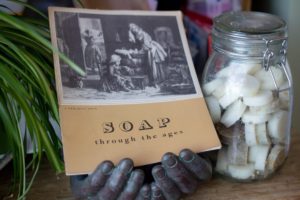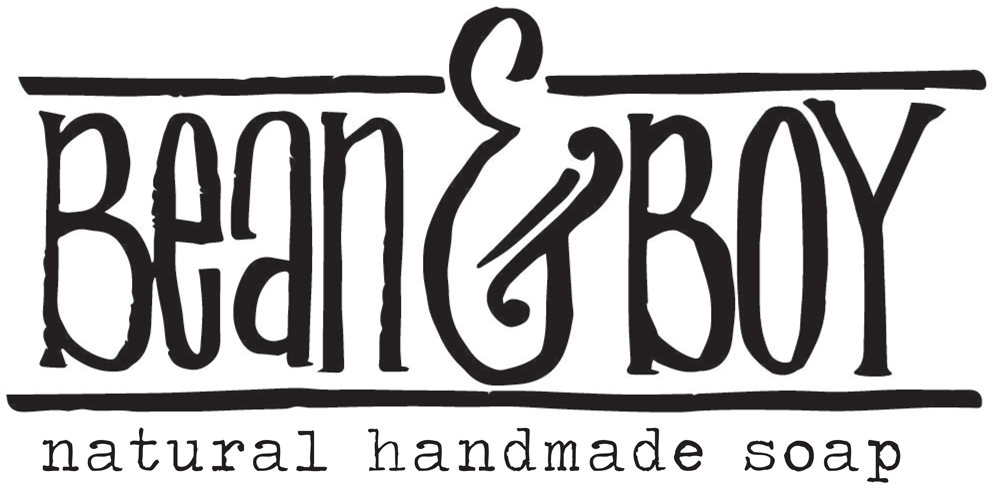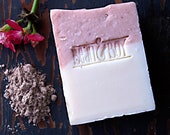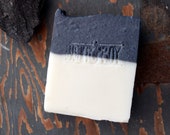We’re pretty excited about our new range of PURE castile soaps here at Bean + Boy. I thought you’d might like to know a little bit more about what’s got us all worked up. Here are 10 reasons why you need castile soap in your home.
But first, a little history. It’s the short, cliffnotes version – I promise.
 Soap has been made almost literally forever. Dr John Hunt wrote a particularly fascinating history of soap which you can find here if you’re interested, but here’s a brief extract detailing the origins of soap use:
Soap has been made almost literally forever. Dr John Hunt wrote a particularly fascinating history of soap which you can find here if you’re interested, but here’s a brief extract detailing the origins of soap use:
It has been suggested that some form of soap, made by boiling fat with ashes, was being made in Babylon as early as 2800BC, but probably used only for washing garments. Pliny the Elder (7BC AD) mentions that soap was being produced from tallow and beech ashes by the Phoenicians in 600BC.
See? Literally forever. If you come on one my soapmaking courses you’ll be hard-pressed to get me to keep quiet on traditional soapmaking methods – but as you’re here online, I’ll spare you the historical details (or perhaps write a separate blog post on them!). We’re here today to consider castile soap, which is a blooming brilliant soapy suds creation that has been in constant use in Britain since around 1550. It has its origins in the Levant, where Aleppo soapmakers made hard soaps based on olive oil and laurel oil for milliennia. This revolutionary method of soapmaking used the locally-available plant oils instead of animal fats. Plant oils break down faster and easier than animal fats, and make use of local crops that are made from the waste of olive oil production. Olive pomace oil is the last press of olives – where the pits and skins are squeezed and wrung out to produce an oil that isn’t great for cooking, but is absolutely packed full of vitamins and minerals that love skin.
In these original recipes, olive oil was blended with laurel oil which was abundantly found in the Castile region to make a hard, super cleansing bar of soap. This deep green bar of soap was called Aleppo Soap but here in England, laurel oil is difficult and costly to come by. It’s easier now that we have open trade routes and incredible transportation options, but those early soapmakers in England (circa 1550) couldn’t use the laurel oil reliably in their recipes, so they adapted the formulation of this all-purpose soap and replaced laurel oil with pomace olive oil, producing a hard, creamish-white bar of soap that gets harder with age.
 Now, almost five hundred years later, we’re still using the same basic formulation to make soaps. Sure, they’ve been refined and the ingredients we source are superior quality (thanks to easier trading than there was five hundred years ago!), but in essence, our castile soap is the same soap that has been used for generations. It’s the same soap that our grandmothers made, and their grandmothers – and their grandmothers, too. Generations of techniques, information, methods, and uses have been handed down through the centuries and we’re honoured to be carrying on this amazing tradition by providing castile soap to your families, and also by teaching families how to make this soap for themselves.
Now, almost five hundred years later, we’re still using the same basic formulation to make soaps. Sure, they’ve been refined and the ingredients we source are superior quality (thanks to easier trading than there was five hundred years ago!), but in essence, our castile soap is the same soap that has been used for generations. It’s the same soap that our grandmothers made, and their grandmothers – and their grandmothers, too. Generations of techniques, information, methods, and uses have been handed down through the centuries and we’re honoured to be carrying on this amazing tradition by providing castile soap to your families, and also by teaching families how to make this soap for themselves.
Olive-oil-only soapmaking is a totally unique experience and you can really tell the quality of the ingredients when you’re making up a batch of bars. Sometimes it takes a really long time to saponify the oils and sometimes it works double-time, forcing you to work quickly to create a salvageable bar. It can take a few extra days in the mould to harden, and is incredibly difficult to cut because it is really hard! It can also take a few extra weeks on the curing rack. But the whole process is totally worth it.
So why do we love it?
The resultant castile bar soap is incredibly versatile – likely why it is has lasted so long even in contemporary society – and can be used for all sorts of household applications: body wash, shower wash, dishwashing soap, counter top cleaner, clothes washing soap, hand soap, soft scrub, all-purpose cleaner… the uses are endless! I’ve become increasingly focussed on reducing the amount of waste we produce as a family, but even more so thinking about reducing our usage and also doing our best to make and use handmade products wherever possible. Not only is this more sustainable and environmentally-focussed, it also helps other traditional crafters to keep these incredible traditions alive.
Here are 10 reasons why castile soap is essential in your home:
1. It is an amazing all-purpose cleaner. A little castile soap mixed with warm water in a spray bottle makes an excellent all-purpose cleaner. I like to grate my castile soap and keep it stored in a jar. That way, when I need to wash down surfaces then I can just take a pinch of soap and pop it into a kilner jar of warm water to dissolve it. I don’t have any spray bottles so I make do with a sponge and it works great! It’s great in kitchens and bathrooms, too.
2. It’s my go-to Travel Soap. Okay, technically not in your home but this is truly one of my favourite uses. When you travel with two kids and absolutely have to take the life-size Paw Patrol figurines – well, bag space is limited. You can use your single bar of castile soap as a body wash, basic shampoo, washing soap for clothes on the go, and even for cleaning up messes in holiday rentals. Great for traveling on a budget or eco-friendly accommodation, brilliant for camping, caravaning, boating and more.
3. Dishwashing Soap / Vegetable Rinse. Scrub excess stubborn dirt off of your veggies or allotment haul with a mild solution of castile soap. It will help to loosen stubborn dirt. Rinse well with water. Don’t worry – castile soap is safe and edible if you miss a spot. You can also use your favourite castile bar to clean dishes in the sink. Again, I just take a pinch of grated castile soap and pop in with a sink of warm water to wash my dishes, but you can also grab the bar and scrub against particularly difficult marks or stains.
4. An easy no-fuss Gardening Spray. Mixing up a mild solution of castile soap and water in a spray bottle makes a brilliant garden spray to combat pests and mildew. The amount you need depends on the problem you’re facing, but I generally use a generous pinch of grated castile soap to half a bottle of warm water. Shake well to mix. Be sure to use plain castile soap for this as essential oils could burn your plants! Test your solution on a small part of a plant to make sure that the plant doesn’t react. (Here’s a recipe that adds a touch of neem oil.)
5. Keep it on hand for First Aid. Did you know that you can use a castile soap solution to clean wounds? This works great on bumps, bruises, grazes and cuts – but anything more serious and you should see a doctor. According to Healthline, a teaspoon of soap mixed in with a cup of filtered drinking water makes it a great all-purpose wound cleaner.
6. You can use it as a pet wash. Castile soap makes a great pet wash! The amount of soap you’ll need depends on the size of your pet. You want to mix in a small amount of castile soap into a bucket of warm water – I’d say, about 2 tablespoons of grated soap into a bucket, or less if you’re washing a smaller pet – and get a-scrubbing. Be sure to use PURE castile soap (not one that has been made with other ingredients or oils) and one that is completely unscented as animals are allergic to most essential oils. Rinse well with clean water. Our castile soaps are made with olive oil which is considered safe for pets.
7. It is a brilliant paintbrush (or makeup brush) cleanser and conditioner. Your paintbrushes and make up brushes need to be conditioned and cleaned regularly to keep them in tip-top shape and to help prolong their life. There are quite a few ways of doing this, but my favourite way to condition my paintbrushes is this: take your brushes and your castile bar soap to the sink. Gently wet the surface of the soap, and run your paintbrush along the surface, ensuring that the paintbrush (or makeup brush) bristles are coated in suds. Gently rinse under slowly running water. Dry off by brushing along a tea towel or kitchen towel to remove excess water and leave to dry.
8. Need a kitchen scourer? No problem. Sometimes you need a tougher cleanser on things like stove tops or bathroom surfaces. Sprinkle on a light layer of baking soda, leave it for a few minutes, and then spray with your castile soap all-purpose cleanser solution. Wipe away the residue and clean as normal.
9. This face soap can also be used to remove make-up. Castile soap is incredibly gentle, and can be used as a facial soap. It also makes a great make-up remover! Ditch the plastic bottles of commercial make-up remover that are packed full of chemicals: you don’t need them anymore. I like to use a face wipe (we have reusable cotton wipes) that I’ve wiped along the surface of a wet bar of soap. I use that to gently rub on my face and remove any make-up. It works really quickly and you can rinse easily and pat dry. Some people like to mix in equal parts of witch hazel, dissolved castile soap, and a carrier oil like olive oil. This makes a more moisturising cleanser but will still need to be rinsed off.
10. It is a great bath soap. I know. Sometimes the simplest reasons are the best ones. Castile soap is a great bath soap. It’s a hard bar of soap that bubbles well, cleans brilliantly and doesn’t leave a slimy residue. It isn’t as soft and moisturising as our range of Avocado and Shea Butter soaps, but it works well for the whole family, and is gentle and soft.
Some links you might enjoy reading:
https://www.pharmaceutical-journal.com/news-and-analysis/opinion/comment/a-short-history-of-soap/20066753.article?firstPass=false
https://www.healthline.com/health/castile-soap#uses
https://www.onegoodthingbyjillee.com/22-uses-for-castile-soap/
https://en.wikipedia.org/wiki/Castile_soap#cite_ref-2
https://www.mnn.com/your-home/at-home/stories/everyday-uses-castile-soap






